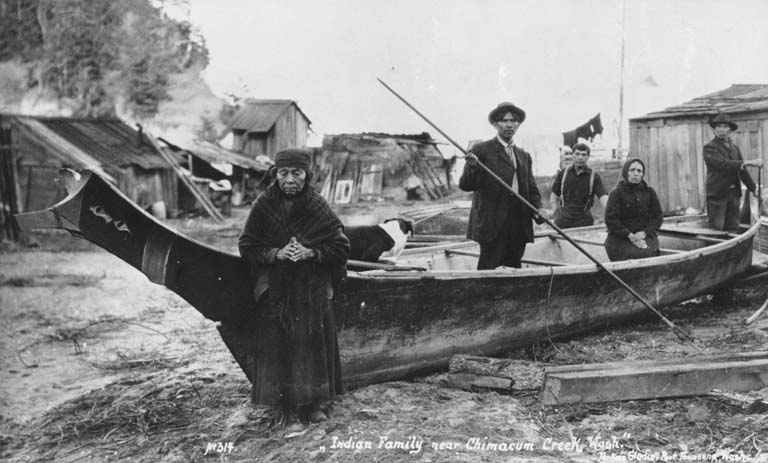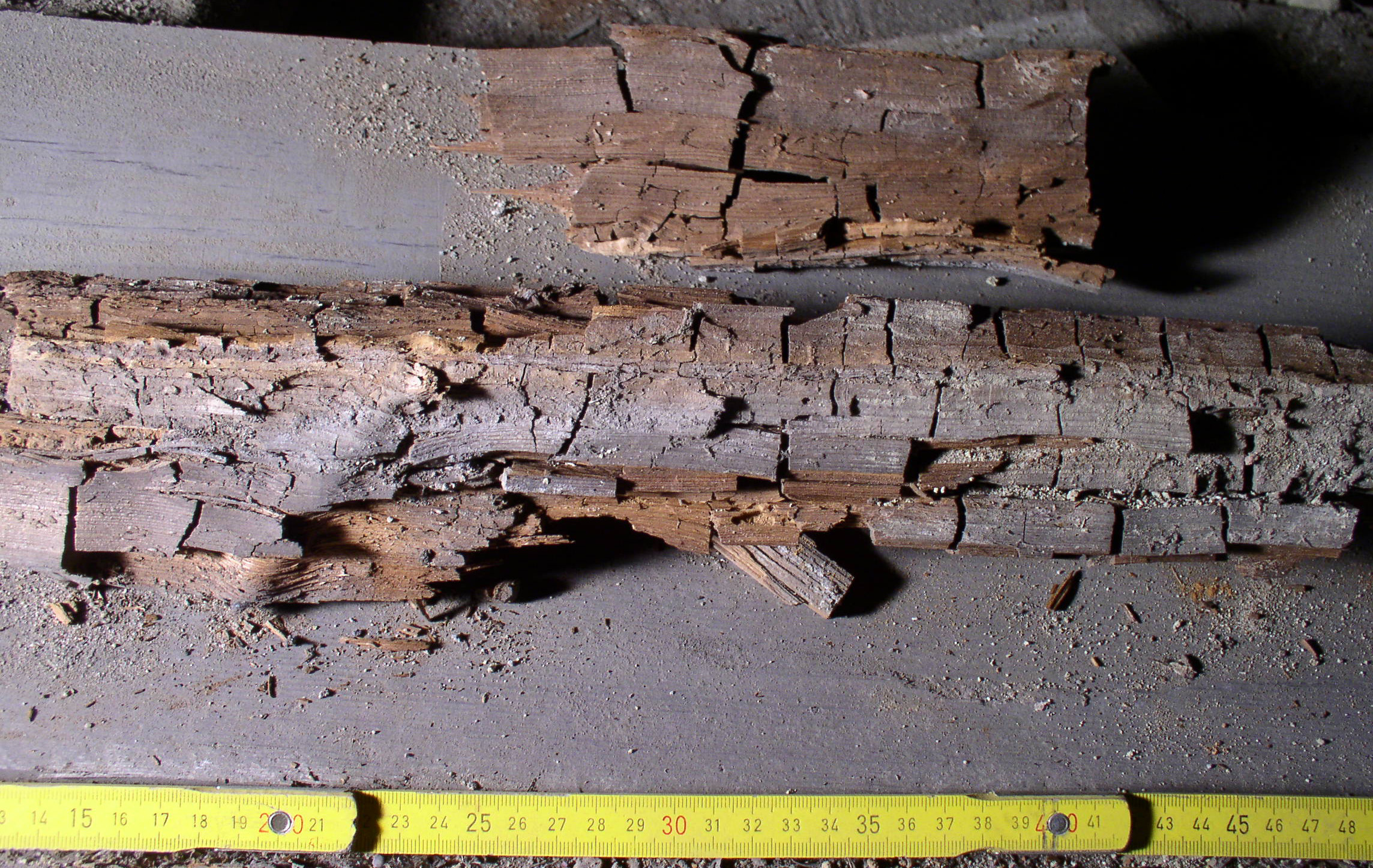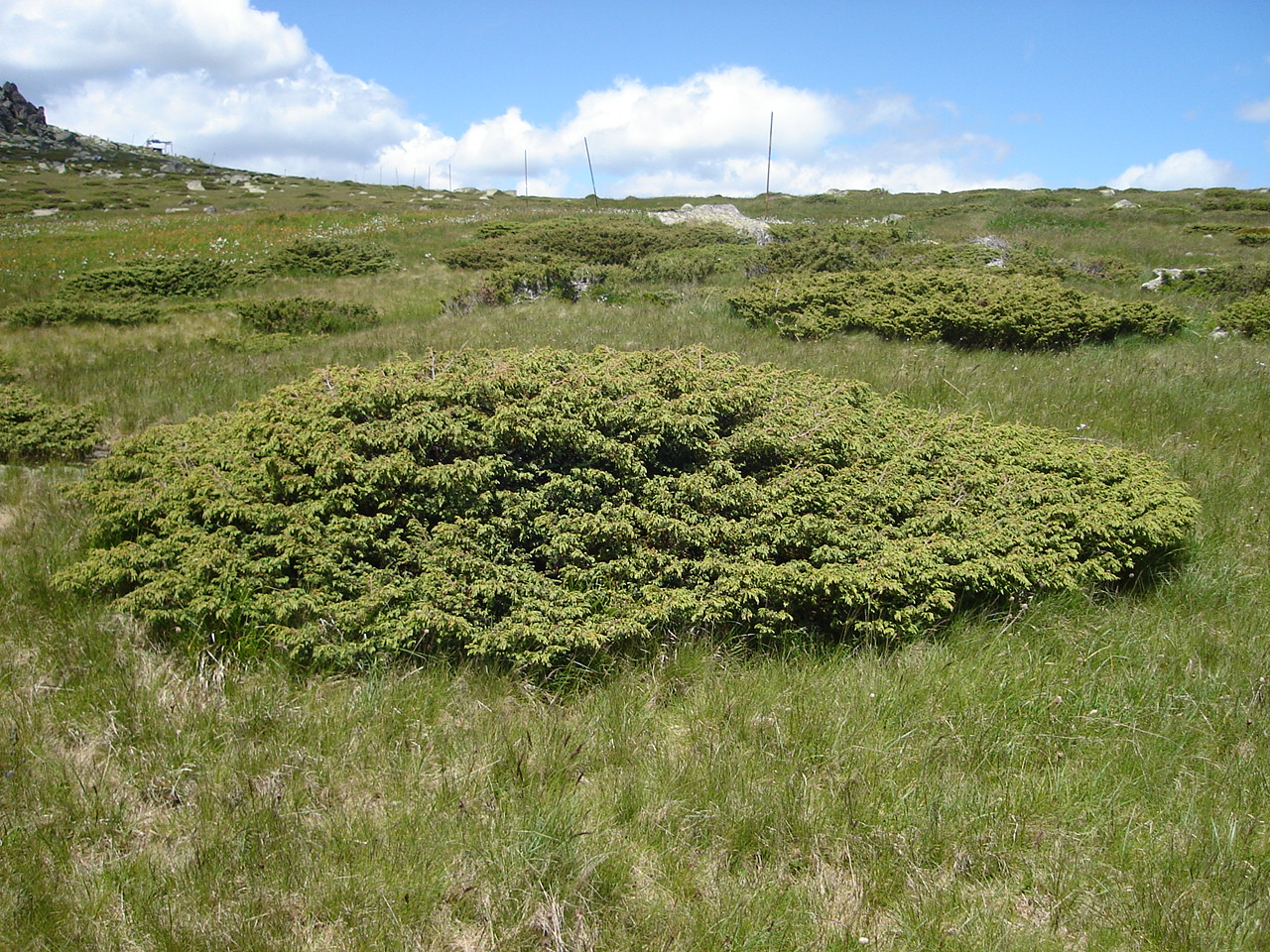|
Thujaplicin
Thujaplicins (isopropyl cycloheptatrienolones) are a series of tropolone-related chemical substances that have been isolated from the hardwoods of the trees of '' Cupressaceae'' family. These compounds are known for their antibacterial, antifungal, and antioxidant properties. They were the first natural tropolones to be made synthetically. History Thujaplicins were discovered in the mid-1930s and purified from the heartwood of ''Thuja plicata'' Donn ex D. Don, commonly called as Western red cedar tree. These compounds were also identified in the constituents of '' Chamaecyparis obtusa'', another species from the '' Cupressaceae'' family. ''C. obtusa'' is native to East Asian countries including Japan and Taiwan, and is also known as ''Taiwan hinoki'', from which the β-thujaplicin was first isolated in 1936 and received its name, ''hinokitiol''. Thujaplicins were the first natural tropolones to be made synthetically, by Ralph Raphael and colleagues, and the β-thujaplicin w ... [...More Info...] [...Related Items...] OR: [Wikipedia] [Google] [Baidu] |
Hinokitiol
Hinokitiol (β-thujaplicin) is a natural monoterpenoid found in the wood of trees in the family Cupressaceae. It is a tropolone derivative and one of the thujaplicins. Hinokitiol is used in oral and skin care products, and is a food additive used in Japan. History Hinokitiol was discovered by a Japanese chemist Tetsuo Nozoe in 1936. It was isolated from the essential oil component of the heartwood of '' Taiwanese hinoki'', from which the compound ultimately adopted its name. Hinokitiol is the first non-benzenoid aromatic compound identified. The compound has a heptagonal molecular structure and was first synthesyzed by Ralph Raphael in 1951. Due to its iron-chelating activity, hinokitiol has been called an "Iron Man molecule" in the scientific media, which is ironic because Tetsuo is translated into English as "Iron Man". Taiwanese hinoki is native to East Asian countries, particularly to Japan and Taiwan. Hinokitiol has also been found in other trees of the ''Cupressaceae'' fa ... [...More Info...] [...Related Items...] OR: [Wikipedia] [Google] [Baidu] |
Tropolone
Tropolone is an organic compound with the chemical formula . It is a pale yellow solid that is soluble in organic solvents. The compound has been of interest to research chemists because of its unusual electronic structure and its role as a ligand precursor. Although not usually prepared from tropone, it can be viewed as its derivative with a hydroxyl group in the 2-position. Synthesis and reactions Many methods have been described for the synthesis of tropolone. One involves bromination of 1,2-cycloheptanedione with ''N''-bromosuccinimide followed by dehydrohalogenation at elevated temperatures, while another uses acyloin condensation of the ethyl ester of pimelic acid the acyloin again followed by oxidation by bromine. : An alternate route is a +2cycloaddition of cyclopentadiene with a ketene to give a bicyclo .2.0eptyl structure, followed by hydrolysis and breakage of the fusion bond to give the single ring: : Thy hydroxyl group of tropolone is acidic, having a p''K''a ... [...More Info...] [...Related Items...] OR: [Wikipedia] [Google] [Baidu] |
Thuja Plicata
''Thuja plicata'' is an evergreen coniferous tree in the cypress family Cupressaceae, native to western North America. Its common name is western redcedar (western red cedar in the UK), and it is also called Pacific redcedar, giant arborvitae, western arborvitae, just cedar, giant cedar, or shinglewood. It is not a true cedar of the genus ''Cedrus''. Description ''Thuja plicata'' is a large to very large tree, ranging up to tall and in trunk diameter. Trees growing in the open may have a crown that reaches the ground, whereas trees densely spaced together will exhibit a crown only at the top, where light can reach the leaves. The trunk swells at the base and has shallow roots. The bark is thin, gray-brown and fissured into vertical bands. As the tree ages, the top is damaged by wind and replaced by inferior branches. The species is long-lived; some trees can live well over a thousand years, with the oldest verified aged 1,460. The foliage forms flat sprays with scale-like ... [...More Info...] [...Related Items...] OR: [Wikipedia] [Google] [Baidu] |
Heartwood
Wood is a porous and fibrous structural tissue found in the stems and roots of trees and other woody plants. It is an organic materiala natural composite of cellulose fibers that are strong in tension and embedded in a matrix of lignin that resists compression. Wood is sometimes defined as only the secondary xylem in the stems of trees, or it is defined more broadly to include the same type of tissue elsewhere such as in the roots of trees or shrubs. In a living tree it performs a support function, enabling woody plants to grow large or to stand up by themselves. It also conveys water and nutrients between the leaves, other growing tissues, and the roots. Wood may also refer to other plant materials with comparable properties, and to material engineered from wood, or woodchips or fiber. Wood has been used for thousands of years for fuel, as a construction material, for making tools and weapons, furniture and paper. More recently it emerged as a feedstock for the production ... [...More Info...] [...Related Items...] OR: [Wikipedia] [Google] [Baidu] |
Ralph Raphael
Ralph Alexander Raphael (1 January 1921 – 27 April 1998) was a British organic chemist, well known for his use of acteylene derivatives in the synthesis of natural products with biological activity. Early life and education Ralph Raphael was born in Croydon, London on New Year's Day 1921, the son of master tailor Jacob ("Jack") Raphael (1889-1978) and his wife, Lily (née Woolf; 1892-1956). He attended secondary school at Wesley College, Dublin and then Tottenham County School, where a chemistry master, Edgar Ware, introduced him to the subject that would become Raphael's lifetime passion. In 1939 he won scholarships to study at Imperial College, graduating BSc with a first-class degree in 1941 and winning the Hofmann Prize for practical chemistry. During the Second World War both the undergraduate and PhD courses at Imperial College were of two year's duration and Raphael completed the latter in 1943. His doctoral work, aimed at the synthesis of vitamin A, was published ... [...More Info...] [...Related Items...] OR: [Wikipedia] [Google] [Baidu] |
Tetsuo Nozoe
Tetsuo Nozoe (野副 鉄男, 16 May 1902 – 4 April 1996) was a Japanese organic chemist. He is known for the discovery of hinokitiol, a seven-membered aromatic compound, and studying non-benzenoid aromatic compounds. Early life and career Tetsuo Nozoe was born on 16 May 1902 in Sendai to Juichi Nozoe, a lawyer and one-time member of the National Diet, and Toyo Nozoe. Tetsuo's family was Buddhist except of his mother who was a devout Christian. Tetsuo had three sisters and seven brothers, and he was the sixth child in the family. He started doing chemical experiments at home since his junior high school days. Although his parents wanted him to become a medical doctor, and even sent him for premedical classes, he proceeded his education with chemistry. After graduating from high school in Sendai, he entered the Department of Chemistry at Tohoku Imperial University in 1920. In university, he studied organic chemistry under Riko Majima, a leading scientist in organic chemistry in Jap ... [...More Info...] [...Related Items...] OR: [Wikipedia] [Google] [Baidu] |
Chamaecyparis Obtusa
''Chamaecyparis obtusa'' (Japanese cypress, hinoki cypress or hinoki; ja, 檜 or , ) is a species of cypress native to central Japan in East Asia, and widely cultivated in the temperate northern hemisphere for its high-quality timber and ornamental qualities, with many cultivars commercially available. Description It is a slow-growing tree which may reach tall with a trunk up to in diameter. The bark is dark red-brown. The leaves are scale-like, long, blunt tipped (obtuse), green above, and green below with a white stomatal band at the base of each scale-leaf. The cones are globose, in diameter, with 8–12 scales arranged in opposite pairs. Related species The plant is widespread in Japan. The related '' Chamaecyparis pisifera'' (sawara cypress) can be readily distinguished in its having pointed tips to the leaves and smaller cones. A similar cypress found on Taiwan is treated by different botanists as either a variety of this species (as ''Chamaecyparis obtusa'' va ... [...More Info...] [...Related Items...] OR: [Wikipedia] [Google] [Baidu] |
Wood-decay Fungus
A wood-decay or xylophagous fungus is any species of fungus that digests moist wood, causing it to rot. Some species of wood-decay fungi attack dead wood, such as brown rot, and some, such as ''Armillaria'' (honey fungus), are parasitic and colonize living trees. Excessive moisture above the fibre saturation point in wood is required for fungal colonization and proliferation. In nature, this process causes the breakdown of complex molecules and leads to the return of nutrients to the soil. Wood-decay fungi consume wood in various ways; for example, some attack the carbohydrates in wood and some others decay lignin. The rate of decay of wooden materials in various climates can be estimated by empirical models.Viitanen, T. et al. (2010). Towards modelling of decay risk of wooden materials. European Journal of Wood and Wood Products 68:303-313. Wood-decay fungi can be classified according to the type of decay that they cause. The best-known types are brown rot, soft rot, and whit ... [...More Info...] [...Related Items...] OR: [Wikipedia] [Google] [Baidu] |
Juniperus Oxycedrus
''Juniperus oxycedrus'', vernacularly called Cade, cade juniper, prickly juniper, prickly cedar, or sharp cedar, is a species of juniper, native across the Mediterranean region from Algeria and Portugal, north to southern France, east to westernmost Iran, and south to Lebanon and Israel, growing on a variety of rocky sites from sea level up to in elevation.Farjon, A. (2005). ''Monograph of Cupressaceae and Sciadopitys''. Royal Botanic Gardens, Kew. The specific epithet ''oxycedrus'' means "sharp cedar" and this species may have been the original cedar or ''cedrus'' of the ancient Greeks. Description ''Juniperus oxycedrus'' is very variable in shape, forming a spreading shrub tall to a small erect tree tall. It has needle-like leaves in whorls of three; the leaves are green, long and broad, with a double white stomatal band (split by a green midrib) on the inner surface. It is usually dioecious, with separate male and female plants. The seed cones are berry-like, green ripeni ... [...More Info...] [...Related Items...] OR: [Wikipedia] [Google] [Baidu] |
Juniperus Occidentalis
''Juniperus occidentalis'', known as the western juniper, is a shrub or tree native to the Western United States, growing in mountains at altitudes of and rarely down to . It is listed as Least Concern on the IUCN Red List because it is a widespread species with an increasing population. Description ''Juniperus occidentalis'' is a shrub or small tree tall. Exceptionally tall specimens can be found in the John Day area of Oregon in excess of tall. The shoots are of moderate thickness among junipers, at diameter. The juvenile leaves (on young seedlings only) are needle-like and long. Arranged in opposite decussate pairs or whorls of three, the adult leaves are scale-like, 1–2 mm long (5 mm on lead shoots) and 1–1.5 mm broad. The cones are berry-like, 5–10 mm in diameter, blue-brown with a whitish waxy bloom, and mature in about 18 months. The male cones are 2–4 mm long and shed their pollen in early spring. The plants are about half monoeciou ... [...More Info...] [...Related Items...] OR: [Wikipedia] [Google] [Baidu] |
Juniperus Californica
''Juniperus californica'', the California juniper, is a species of juniper native to southwestern North America. Description ''Juniperus californica'' is a shrub or small tree reaching , but rarely up to tall. The bark is ashy gray, typically thin, and appears to be "shredded". The shoots are fairly thick compared to most junipers, between in diameter. The foliage is bluish-gray and scale-like. The juvenile leaves (on the seedlings) are needle-like and long. Arranged in opposite decussate pairs or whorls of three, the adult leaves are scale-like, long on lead shoots and broad. The cones are berrylike, in diameter, blue-brown with a whitish waxy bloom, turning reddish-brown, and contain a single seed (rarely two or three). The seeds are mature in about 8 or 9 months. The male cones are long and shed their pollen in early spring. This juniper is largely dioecious, producing cones of only one sex, but around 2% of plants are monoecious, with both sexes on the same ... [...More Info...] [...Related Items...] OR: [Wikipedia] [Google] [Baidu] |
Juniperus Communis
''Juniperus communis'', the common juniper, is a species of small tree or shrub in the cypress family Cupressaceae. An evergreen conifer, it has the largest geographical range of any woody plant, with a circumpolar distribution throughout the cool temperate Northern Hemisphere. Description ''Juniperus communis'' is very variable in form, ranging from —rarely —tall to a low, often prostrate spreading shrub in exposed locations. It has needle-like leaves in whorls of three; the leaves are green, with a single white stomatal band on the inner surface. It never attains the scale-like adult foliage of other members of the genus. It is dioecious, with male and female cones (both of which are wind pollinated) on separate plants. The male cones are yellow, long, and fall soon after shedding their pollen in March–April. The fruit are berry-like cones known as juniper berries. They are initially green, ripening in 18 months to purple-black with a blue waxy coating; they are spheri ... [...More Info...] [...Related Items...] OR: [Wikipedia] [Google] [Baidu] |




